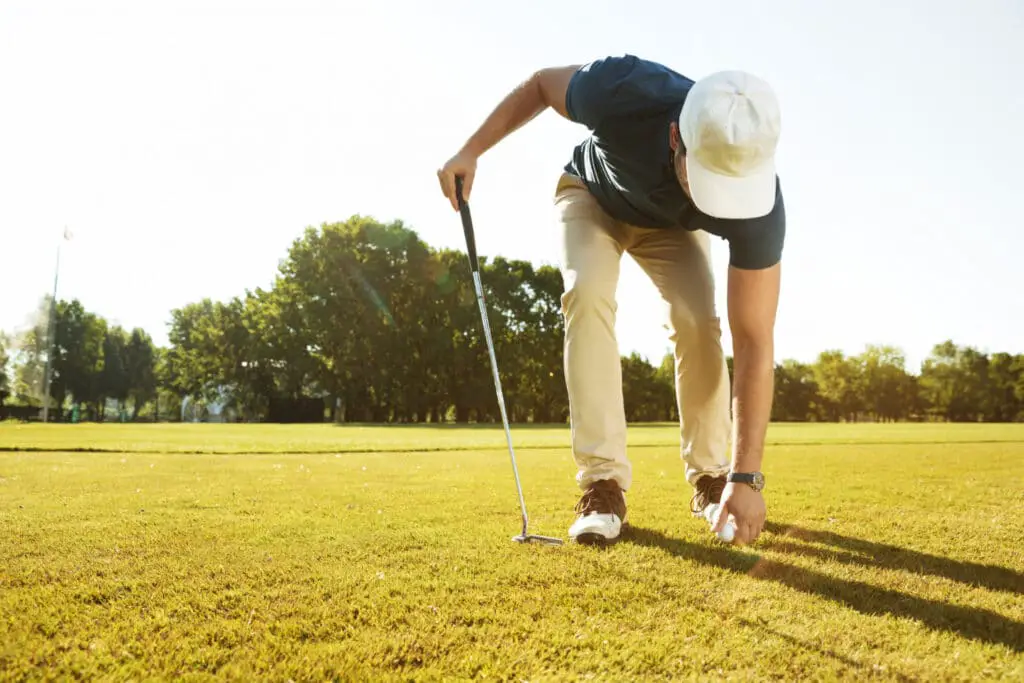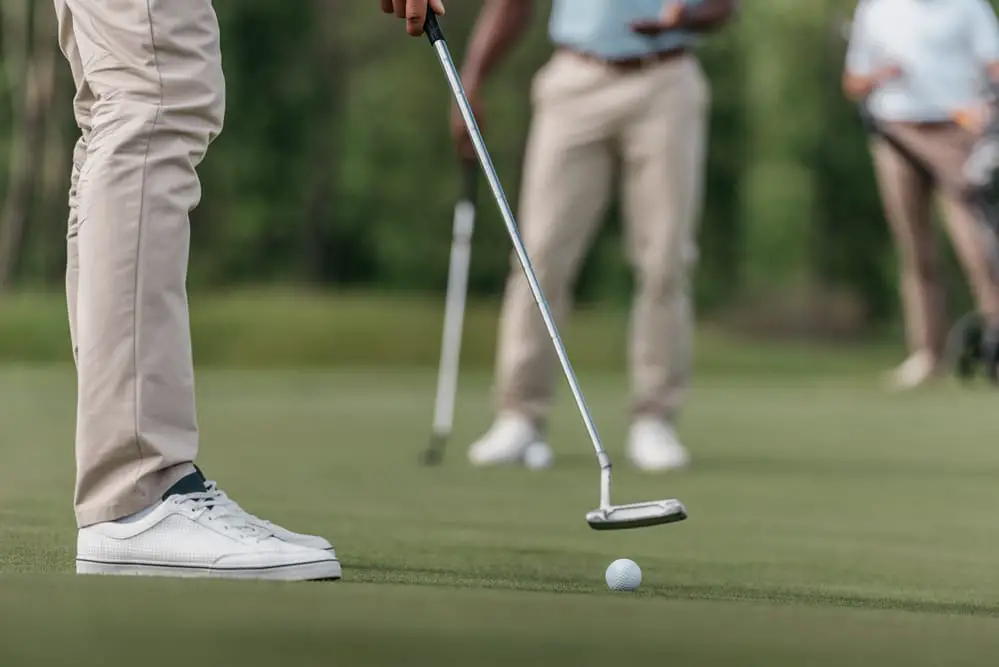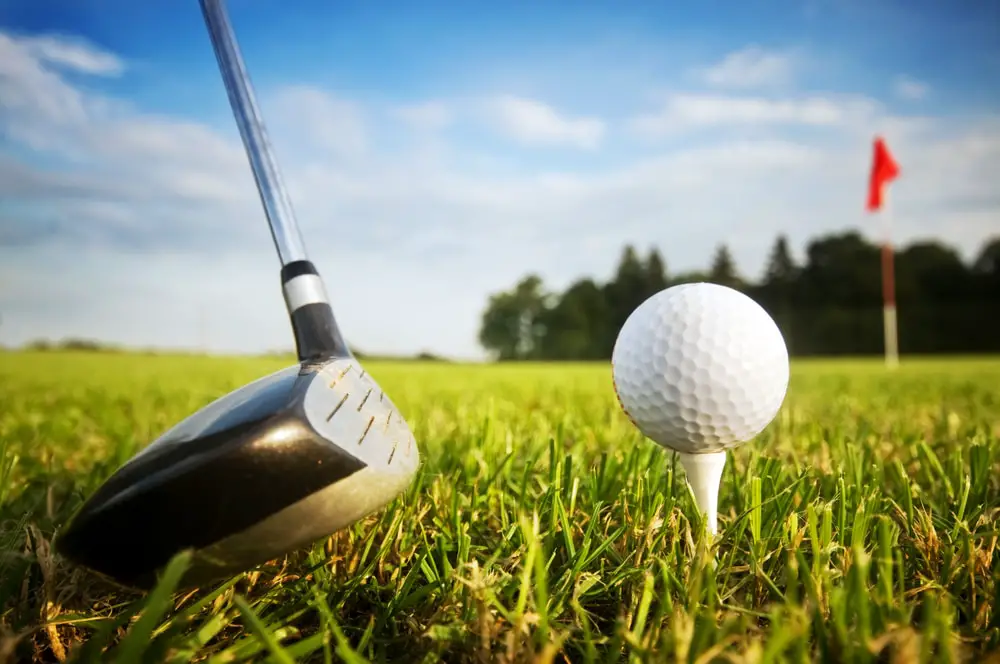Last Updated on June 7, 2023
Are you a golfer searching for the perfect set of golf clubs? A great starting point is taking the time to measure your wrist-to-floor height, as this important measurement will allow you to find just the right length and size of club that fits your body. In this article, we’ll break down how to easily take this essential measurement so you can get out on the course with confidence in no time.
Paragraph 2: If you’re an avid golfer or even just getting into the game, having the proper equipment is key to success. That’s why it’s important to understand how to measure your wrist-to-floor length correctly when selecting golf clubs. With this information, you’ll be able to purchase golf clubs that are properly sized and tailored specifically for your body type.
Paragraph 3: Taking measurements may seem intimidating at first glance, but don’t worry – measuring your wrist-to-floor height couldn’t be easier! All it requires is a tape measurer and some guidance from our step by step instructions below. So what are you waiting for? Let’s jump in and learn how to accurately measure your wrist-to-floor height today!
What Is The Wrist-To-Floor Measurement?
What is the wrist-to-floor measurement? It’s an important factor to consider when measuring for golf clubs. This measurement helps determine which club length will best suit a golfer’s height and arm length. To take this measurement, one should stand upright with their arms relaxed at their sides. The distance from the floor to the bottom of the player’s wrist joint should be measured. Knowing this information can help players purchase correctly sized clubs that are comfortable and suited to their body type.
Why It Is Important For Golf Clubs
It’s essential to measure your wrist-to-floor length when selecting golf clubs, as it helps you get the best fit for your swing and physique. A good fit means that the club will provide maximum performance on the course. Here are four important reasons why measuring wrist-to-floor is so important for golf clubs:
- Grip Size – The size of a grip determines how comfortable a golfer feels while holding the club. Measuring wrist-to-floor can help determine what size grip is right for you in order to ensure proper mechanics throughout your swing.
- Swing Weight – This refers to the weight distribution within each golf club. When getting fitted with new clubs, measuring wrist-to-floor can help make sure they have the correct balance point and feel during the swing.
- Club Length – Knowing your exact measurement allows you to select golf clubs that match your height and arm span perfectly, which can improve accuracy and distance off the tee.
- Feel – Wrist-to floor measurements also factor into determining if a particular club head design would be optimal for you or not based on your build and playing style. Paying attention to this detail ensures better control over every shot.
By taking all these factors into consideration, golfers can find their ideal combination of club head design, shaft flex, grip type and size, lie angle and overall length for improved performance out on the course. This ultimately leads to better scores and more enjoyment from playing golf!
What Materials Are Needed To Make The Measurement
Now that you know why it is important to measure wrist-to-floor for golf clubs, let’s look at what materials are needed in order to make the measurement. To begin with, a measuring tape is necessary as it will be used to measure from your wrist to the floor. A floor marker such as a pencil can also be helpful if you want to mark the exact spot on the floor where your wrist reaches. In addition, having a calculator handy can help when converting inches into centimetres or vice versa. Finally, a flexible tape measure may come in handy if an area needs to be measured without having direct contact with it.
Below is a table summarizing the materials required:
| Materials Needed | Description |
|---|---|
| Measuring Tape | Used to measure wrist-to-floor distance |
| Floor Marker (e.g., Pencil) | Optional tool for marking the exact spot on the floor |
| Calculator | Optional tool for marking exact spot on the floor |
| Flexible Tape Measure | Can measure areas without contacting them directly |
Step-By-Step Guide To Measuring Wrist-To-Floor
Measuring wrist-to-floor length is an important step in golf club fitting and adjusting the clubs to fit body types. To get started, here are some simple steps to follow:
- Start by having the person you’re measuring stand up straight with their arms relaxed at their sides.
- Have them put on a pair of shoes that they would normally wear while playing golf. This will ensure accurate measurements for the height needed for their golf clubs.
- Now measure from their wrist down to the floor, making sure to keep the tape measure as level as possible. The measurement should be taken in inches or centimetres, depending on personal preference.
- It’s also important to make adjustments if necessary based on body type, such as accounting for long legs or short stature. For example, someone who has longer legs may need slightly longer golf clubs than what is typically recommended for their height due to added reach needed when swinging.
Once you have collected all your measurements, it’s time to move on to selecting which golf clubs suit you best! Make sure to take into account any personalized adjustments required based on individual physical characteristics before taking your first swing with new clubs.
How To Interpret The Results Of Measuring Wrist-To-Floor

Once you’ve read your wrist-to-floor measurement, it’s time to interpret the results. To do this correctly, you’ll need to take into account your body type and floor height, as well as the measuring technique used.
For example, if you’re tall with a longer torso and short legs, then your wrists will be closer to the floor than someone of average height – meaning that your golf clubs should also be shorter in length. On the other hand, if you have a long lower body relative to your upper body, or are standing on a raised surface like an elevated platform when measuring, then your measured wrist-to-floor distance may not accurately reflect your ideal club length. In either case, make sure to factor these things in when determining what size golf clubs best suits you.
Adjustments For Different Body Types And Shapes
Golfers come in all shapes and sizes, so it’s important to make adjustments when measuring wrist-to-floor for golf clubs. Adjustments should be considered for taller golfers, short golfers, those with larger builds, those with smaller builds, and athletes.
| Body Type | Wrist-to Floor Measurement | Considerations |
|---|---|---|
| Taller Golfers | Increase by 1/2 inch | Long arms & legs |
| Short Golfers | Decrease by 1/2 inch | Shorter arms & legs |
| Larger Builds | Increase by an additional 1/4 inch | Increased leverage of club shaft |
| Smaller Builds | No change | |
| Athletic Bodies | Increase or decrease depending on limb length |
When adjusting the wrist to floor measurements for different body types and shapes, always keep in mind the golfer’s individual needs. For example, a tall golfer who has shorter than average arm length may need less adjustment than what is suggested for their height. On the other hand, a shorter golfer with longer than average arms might require more adjustment. In addition, athletic bodies that have very long limbs could benefit from either increasing or decreasing based on their individual situation. Ultimately, it is best to seek advice from a professional in order to find the most comfortable fit for each particular person.
Common Mistakes When Measuring Wrist-To-Floor
Measuring wrist-to-floor for golf clubs can be a difficult task, especially if you are unfamiliar with the process. To ensure that your measurements are accurate and effective, it is important to avoid common mistakes when measuring.
One of the most common mistakes made while measuring wrist-to-floor is measuring inaccurately due to incorrect technique or wrong posture. When taking this measurement, make sure that you stand up straight and keep your arms relaxed at your sides. Additionally, use only a tape measure, as other tools may give inaccurate results. It’s also important not to round off numbers; instead, note down exact measurements and double check them afterwards.
Another mistake people often make is forgetting to take into account any clothing they’re wearing when taking their measurements – such as trousers or skirts – as these can affect the length of the measurement taken from wrist-to-floor. For example, high heeled shoes will increase the overall measurement compared to flat soled shoes, which provide an accurate reading on how tall you actually are in relation to your torso and club fitting needs. Taking all of this into consideration should help you get more precise readings when measuring wrist-to-floor for golf clubs.
Therefore, although it might seem like a straightforward procedure, there are some key points to remember when measuring wrist-to-floor for golf clubs: use correct techniques and posture; use only a tape measure; don’t round off numbers; and take into account any items of clothing worn during the measurement session. By following these simple steps correctly every time, you’ll have better chances of obtaining accurate results each time you measure yourself for golf club fittings!
Conclusion
In conclusion, measuring your wrist-to-floor measurement for golf clubs is an important step in adjusting the golf club to fit your body size and shape. Knowing how to accurately measure this distance can make a big difference in improving your game. It’s important to keep in mind that wrist-to-floor measurements aren’t necessarily the same for all golf clubs or genders; shorter players may require different lengths than taller ones.
When taking the measurement, it’s essential to double check what you have written down, as incorrect readings could lead to poor performance on the course. I recommend standing with your arms straight at your sides while having someone else take the measurement from floor level up to where your wrist bone meets your hand. Taking this into consideration will help ensure you are getting accurate results that properly reflect your body type and the length of your arm.
Finally, if you’re ever unsure about whether or not a particular golf club is right for you, don’t hesitate to ask a professional who specializes in fitting clubs based on individual needs. Remember: being fitted correctly goes a long way when it comes to playing better golf!


